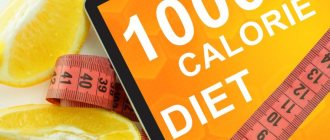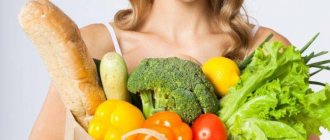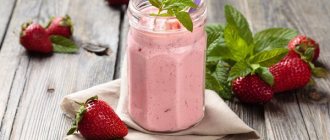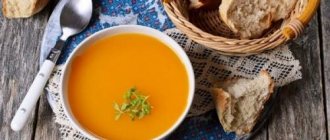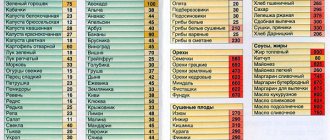The “1000 calorie” diet is attractive because of its balanced menu and the ability to lose up to 1 kg per day, and up to 5 kg per week. The diet is not exhausting for the body every day, as it allows you to eat food once every 3 hours in small portions. In the age of total consumption of fatty and unnatural foods, following a new diet will lead to the loss of extra pounds and to the general improvement of the body after the end of the diet. A new diet will allow you to lose excess weight in a couple of weeks without difficulty.
- We recommend reading: diet for 1100 and 900 calories per day
The main rule of the “1000 calorie” diet is not to consume more than 1000 kcal per day; for this you will have to arm yourself with a kitchen scale, a calculator and a table of caloric content of foods in order to correctly create a menu.
With this diet you don’t feel hungry, the menu is varied, and it’s easier for the stomach to digest small amounts of food. It has been proven that the body requires at least 1200 kcal per day to maintain balance; with less of them, it will draw on internal reserves and gradually release the accumulated reserves, i.e. the person will lose weight.
Grocery list
The basic menu should include foods with a low glycemic index (a measure of the effect of foods on blood glucose levels). These are vegetables: cabbage, carrots, bell peppers - a fresh salad made from them, or stewed vegetables.
Low-calorie cucumbers and tomatoes are also suitable for the salad; do not forget about fresh greens, they will strengthen the immune system and help quickly digest food. Products of this type also include fruits, but only with a small amount of calories: orange, grapefruit, apple, plums.
Fruits are required to be included in the menu, as they help the proper digestion of food every day and supply the body with fructose, which replaces sugar.
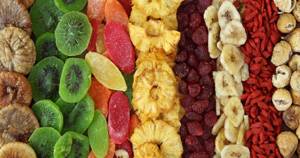
Among meat dishes, choose lean varieties of beef, chicken and turkey. The meat is boiled or baked, or it can be stewed with a minimum amount of oil. The same rule applies to fish: cod, haddock, navaga, and river perch are suitable. Meat and fish contain protein and many microelements that will support the body during food restrictions.
Suitable dairy products include: unsweetened yogurt, kefir, low-fat cottage cheese and cheese. During the diet, it is recommended to drink tea or coffee without sugar and water, to which a little lemon is added if desired. Juices are also recommended, but only from citrus fruits (orange, tangerine) or vegetables. It is recommended to drink 2 liters of water per day.
Water will help speed up your metabolism, which, together with a properly selected diet, will give the desired result. For snacks, you can take low-calorie cereal bars and crispbreads. Dried fruits in small quantities can also be included in the diet.
It is necessary to exclude from the diet: buns and cakes, all fried foods, bread made from premium flour, fatty meat and fish, sausages and sausages, sugar, sauces, alcoholic beverages.
Making a menu
Since the list of prohibited foods is small, the 1000 calorie diet is quite varied. The main thing is to refrain from snacking.
Here are some menu options:
1st option
- Breakfast: 100 grams of cottage cheese; rye bread toast; unsweetened tea.
- Second breakfast: big apple.
- Lunch: 200 grams of vegetable soup; 100 grams of boiled chicken; big tomato.
- Afternoon snack: a glass of yogurt; 2 oatmeal cookies.
- Dinner: 200 grams of buckwheat; 200 grams of vegetable salad.
2nd option
- Breakfast: steamed omelet of 2 eggs; a slice of black bread; coffee without cream and sugar.
- Second breakfast: a glass of orange juice.
- Lunch: 200 grams of cabbage soup; 100 grams of steamed veal; 150 grams of vegetable salad.
- Afternoon snack: 150 grams of fruit salad.
- Dinner: 200 grams of risotto with seafood; A glass of tomato juice.
3rd option
- Breakfast: 200 grams of oatmeal with milk; Herb tea; small toast with a piece of hard cheese.
- Second breakfast: banana.
- Lunch: 200 grams of vegetable stew; 200 grams of boiled fish.
- Afternoon snack: 100 grams of cottage cheese casserole.
- Dinner: 200 grams of chicken salad (without mayonnaise!); a glass of kefir.
By maintaining the caloric content of your diet and using these examples, you can independently think through the menu for the week, based on your own taste preferences.
Sample menu for the week
Meals should be distributed on the menu evenly throughout the day, for example, breakfast at 7 a.m., second breakfast at 10 a.m., lunch at 1 p.m., afternoon snack at 4 p.m., dinner at 7 p.m. The sixth meal if you feel very hungry is around 9-10 p.m. can be a green apple or low-fat kefir. All foods need to be weighed every day and their caloric content measured in order to reach the figure of 1000 kcal per day! Reviews about this menu are only positive; those who tried the dishes from this list noted that they tolerated the diet without problems, they practically did not feel hunger.
Monday
- Omelette, bread, a piece of cheese, unsweetened tea or coffee;
- Green apple;
- Roasted Turkey with Stewed Zucchini;
- Muesli bar;
- Cottage cheese casserole, kefir.
Tuesday
- Oatmeal with skim milk, unsweetened tea or coffee;
- Banana;
- Vegetable soup, a piece of grain bread;
- Unsweetened yogurt;
- Salad of fresh vegetables and canned tuna, tomato juice.
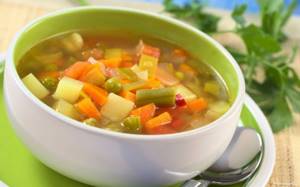
Wednesday
- 2 boiled eggs, toast with cheese, green tea;
- Orange juice;
- Baked cod with rice;
- Green apple;
- Buckwheat, fresh cucumber and onion salad, tomato juice.
Thursday
- Low-fat cottage cheese pancakes, green tea;
- Kiwi;
- Risotto with shrimp or squid, tomato juice;
- Muesli bar;
- Salad of cucumber, herbs and boiled egg, black tea.
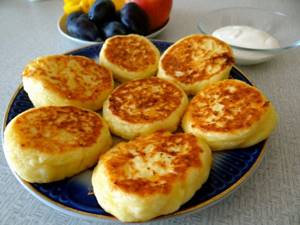
Friday
- Omelet with green peas, green tea;
- Unsweetened yogurt;
- Vegetable soup, a piece of grain bread;
- Low-fat cottage cheese, kefir;
- Fruit salad.
Saturday
- Boiled chicken, fresh cucumber, unsweetened tea or coffee;
- Kiwi;
- Baked potato;
- Unsweetened yogurt;
- Salad of fresh vegetables and canned tuna, tomato juice.
Sunday
- Millet porridge in water with dried apricots, unsweetened tea or coffee;
- Green apple;
- Baked river perch with mashed potatoes;
- Muesli bar;
- Boiled beef, vegetable stew.

Diet "1000 calories" per day
The 1000 calorie diet was developed by a nutritionist. The diet is balanced and varied, it includes 3 main meals and 2-3 snacks, as modern nutritionists usually recommend.
The diet is low-calorie (involves consuming 1000 calories per day), and it is recommended to follow it for no more than a week. How many kilograms can be lost during this time? This is individual and depends on the amount of extra pounds and what diet you followed before the diet.
- A 1000 calorie diet can be a good shake-up for the body if the weight has gained.
After a week of dieting, slightly increase the amount of calories, this will prevent the body’s metabolism from slowing down. Eliminate, at least temporarily, fatty and sweet foods. Otherwise, the body, having survived the “hungry days”, will strive to quickly replenish losses.
Two diet menu options for 1000 calories. First diet for 1000 kcal:
Breakfast: a piece of black or 2 slices of diet bread or a quarter of unleavened flatbread, low-fat cottage cheese (2 tablespoons) or half a glass of diet yogurt (kefir).
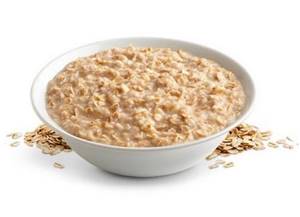
Second breakfast: fruit, choice of: apple or pear or peach or orange or 2 plums or 2 apricots.
Lunch: 100 grams of chicken (or turkey) or 150 grams of sea fish or vegetarian schnitzel, bean (vegetable) soup, green vegetable salad, 3 tablespoons of side dish (stewed vegetables or porridge in water).
Afternoon snack: any fruit or an ear of boiled corn, 8 almonds (2 walnuts).
Dinner: 1 egg or 2 pieces of low-fat sausage or 3-4 sardines in oil, half a glass of buckwheat or oatmeal, vegetable salad of cucumber, tomato, lettuce and herbs.
Before going to bed, you can eat 1 tablespoon of low-fat cottage cheese and a slice of diet bread.
The second version of the approximate menu for the day for 1000 calories
Breakfast: soft-boiled egg, a slice of bread, butter (10 grams), a glass of skim milk, half a grapefruit.
Second breakfast: fruit of your choice (apple or pear or peach or orange or 2 plums or 2 apricots).
Lunch: boiled lean meat (80 grams), stewed vegetables (200 grams), or vegetable soup, green salad.
Afternoon snack: a piece of bread with butter (no more than 5 grams of butter) or cheese or cottage cheese (up to 30 grams), skim milk.
Dinner: boiled lean meat (80 grams), stewed vegetables (200 grams), green salad, half a glass of skim milk (it can be added to coffee or tea).
Before going to bed, you can drink a glass of low-fat kefir.

During the diet, you need to drink at least 10-12 glasses of liquid. To drink, you can drink green tea, chamomile decoction or pure water without gas. You can drink coffee 1-2 times a day.
Don't think that the less you drink, the better. If there are no problems with the kidneys, the norm of water consumption for an adult is from 30-35 ml per kg of body, this is the only way the body will not store water in reserve and will be able to effectively remove all waste products.
We recommend: to create a menu, use our online calorie counter.
Before you start losing weight on a 1000 kcal diet, consult your doctor.
Dish recipes
While following the 1000 calorie diet, you can include delicious low-calorie dishes in the menu and cook them once a day using simple recipes from inexpensive ingredients.
Mix of zucchini and eggplant
Take a couple of eggplants and a couple of medium-sized zucchini, cut into cubes. Melt a little vegetable oil in a frying pan and place the eggplants and zucchini there. Saute for 15 minutes, add one red pepper and one onion, cut into half rings, simmer for another 10 minutes. Add garlic, salt, herbs and pepper to taste, simmer for another 10 minutes (160 kcal).
Cod fillet with celery in foil
Cut the cod fillet into portions, add salt and pepper, and squeeze out lemon juice. Place the pieces on a thick layer of foil. Cut one red pepper, two thick stalks of celery into large pieces and cover the fish fillet. Cover food with foil and bake for 30 minutes. (135 kcal).
Curd casserole with dried apricots
Break one egg into low-fat cottage cheese (500 g) and add a tablespoon of flour. Cut dried apricots (10 pcs.) into four pieces each and place in the curd mass. Form into a casserole dish and bake for 30 minutes. (112 kcal).
Salad with arugula, tuna and smoked tomatoes
Pour the package of arugula or salad mix into a salad bowl. Open a can of tuna in its own juice and mix its contents with the herbs. Smoked canned tomatoes (5-6 pieces), cut into 4 pieces each, place in a salad, add a tablespoon of peeled sunflower seeds (98 kcal).
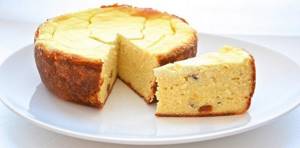
1000 calorie diet results

The results of the 1000 calorie diet vary from person to person. Some people manage to lose up to 5-7 kg in a week, while in other cases the figures tend to 1-3 kg. It all depends on the initial body weight, the formed diet, and the individual characteristics of the body.
If your weight has been rapidly increasing, then cutting calories will become a real stress, and the growth of indicators on the scale will at least stop. However, long-term adherence to such a diet is strongly not recommended so as not to harm the body.
- See also results and reviews about intermittent fasting
Useful tips
The diet requires the necessary attitude; it is not recommended to start it in a depressed state or immediately after an illness. It is better to start a diet in a calm state of mind, having set a goal for yourself - to lose weight. The correct solution would be to keep a diary, i.e. record foods and calories consumed per day. The diary will clearly show how to meet the figure of 1000. In the same diary, you can keep track of the lost kilograms, which will be an incentive to further continue proper nutrition.
You need to eat in small portions, without rushing into your daily diet at once.
It is better to create a menu slowly, keeping in mind the details of individual nutrition. It will not be superfluous to think about the issue of food away from home, when traveling, where the necessary products may not be available. In this case, they need to find a replacement. Fitness classes will help you get excellent results. They leave the diet gradually, without starting to eat everything, otherwise the effect will be lost in a short time.
THESE ARTICLES WILL HELP YOU LOSE WEIGHT
Your feedback on the article:
( 338 ratings, average: 4.55 out of 5)
Contraindications and side effects
Only young, completely healthy people can adhere to a strict diet.
Such drastic restrictions in the diet are contraindicated if:
- diseases of the digestive tract;
- pathologies of the heart and blood vessels;
- nervous disorders, tendency to depression;
- metabolic diseases;
- hormonal imbalances;
- diabetes mellitus;
- pregnancy and lactation;
- intense physical and mental stress.
This method of combating excess weight is not suitable for children, adolescents and the elderly.
Since we are talking about a large calorie deficit, side effects during the diet occur frequently. Weakness, drowsiness, tremor, headaches, dizziness, and fainting may occur.
Long-term dietary restrictions can lead to exhaustion, nervous disorders, hair loss, deterioration of skin condition, and digestive disorders.
